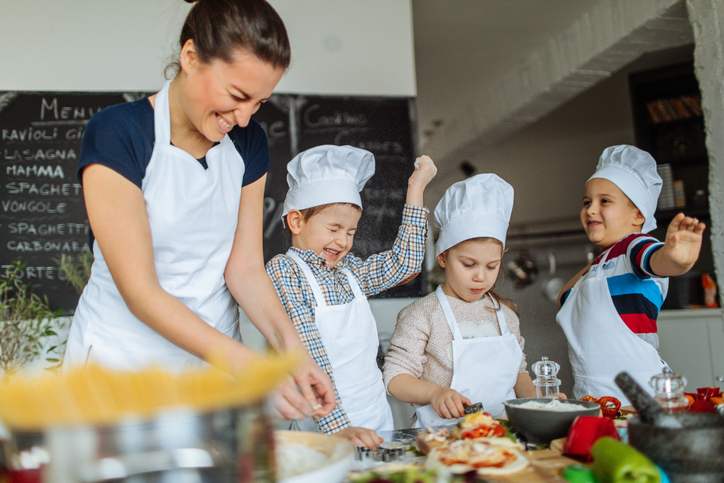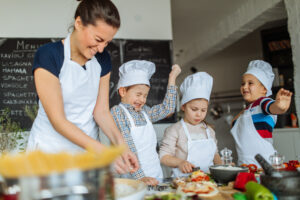You know it better than most – the life of a chef is hectic, with never-ending work and a lot of time spent on your feet. Why should you spend your valuable time teaching unruly kids the basics of kitchen safety? Surely your time would be better spent in your restaurant or learning the techniques of a new cuisine.
Or would it?
The impact of time spent with young people can’t be quantified like the results of a training course, but the future chefs you inspire can be your legacy in hospitality.
Restaurants and commercial kitchens across Australia struggle with labour shortages, made worse by the common portrayal of hospitality as a transient job instead of a real career. Younger generations have lost interest in working in hospitality, but your efforts could inspire the next generation to love cooking the way you do.
After all, Worldchefs celebrates International Chefs Day to share the joys of the culinary profession with the world, and to ‘grow great chefs’. You can do your part simply by instilling habits of cleanliness, safety, and sustainability in future chefs.
Here are ten essential food safety topics to start your young chefs on a path in hospitality.
1. Use Colour-Coded Tools to Prevent Cross-Contamination
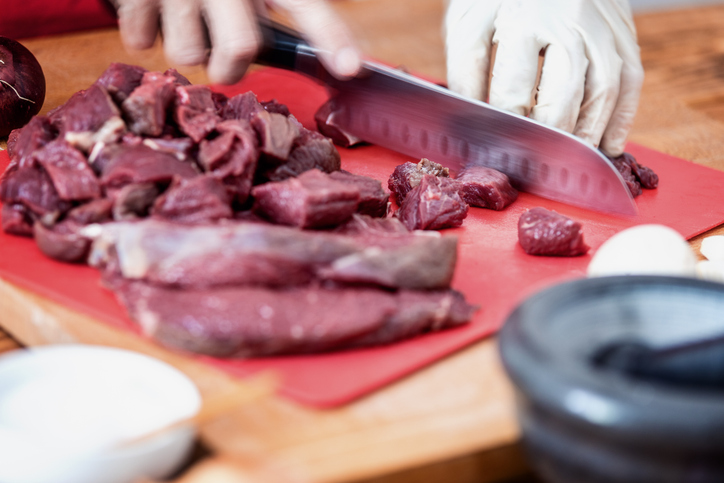
Young chefs need to build their knowledge from a foundation of safety. One of the basic safety mechanisms in a commercial kitchen is colour coding to prevent cross-contamination.
Cross-contamination can occur between raw and cooked food as well as between high and low-risk areas in the facility. Tools are colour-coded to specify their use, helping prevent the spread of germs. Colour coded tools range from cutting boards, knives, and tongs, to microfibre cloths and other cleaning equipment.
Generally, the colour coding for kitchen utensils follows these rules:
- Red – raw meat
- Yellow – raw poultry
- Blue – raw fish
- Green – fruit, vegetables, and salads
- Brown – cooked meat
- White – dairy products
As these rules vary from kitchen to kitchen, it’s important to draw your future chefs’ attention to the colour coding guide on your kitchen safety wall chart.
2. Safeguard Fresh Produce with Proper Sanitising
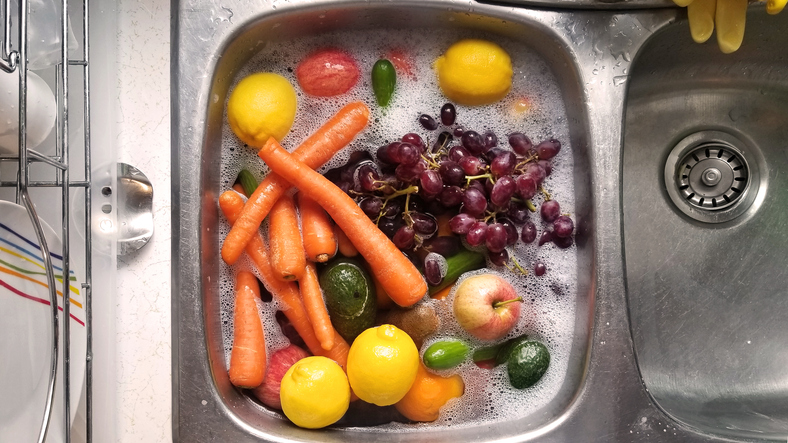
Young chefs may not know that perishable ingredients such as fruit and vegetables require special handling to maintain their freshness through the prepping and cooking process.
Kitchen safety is critical in the process where fruit, vegetables, and salads are sanitised using a chlorine solution. The food is sterilised by soaking the fresh produce in a sink full of the chemical solution. Staff must wear PPE and follow a specific procedure to prevent skin or eye irritation.
3. Wear Gloves for Effective Food Safety
Young chefs may ask why it’s important to use PPE like gloves in the kitchen. The first reason you can share is to prevent cross-contamination of the food you’re giving to your customers, either from raw food you’ve previously touched, or from bacteria that live on your skin.
The second reason for gloves to be used in the kitchen is to protect the chefs. Raw food can contain harmful bacteria, which must be prevented from entering the body through wounds or openings.
To keep your young chefs engaged, let them try on the gloves. Show them the safe way to remove the gloves without touching the contaminated outside surface.
4. Master Kitchen Safety with Clear Operating Procedures
Teaching children about Standard Operating Procedures (SOPs) isn’t as fun as colourful equipment or as interactive as trying on gloves, but it’s important to introduce processes into your talk.
To make things more interactive, young chefs could practice the right way to prepare food, clean surfaces, or load dishwashers.
To use the last example, correct dishwasher loading procedures can be as simple as placing bowls and plates face down, so water doesn’t collect in their curves. These SOPs might also include the correct temperatures for different types of dinnerware, and other more complex instructions.
5. Use Warewashing Chemicals to Keep Tableware Clean & Shiny
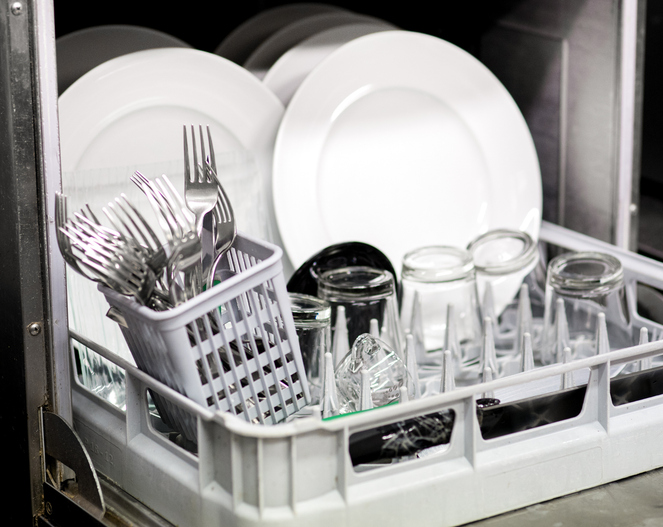
Growing great chefs means training hospitality staff who notice small details, like how clean and shiny tableware is. Crockery, cutlery, and glassware come out gleaming when good quality dish machine detergent and rinse aid are used.
The chemistry of these products combines to reduce streaks and watermarks by softening hard water, promoting water sheeting, and preventing foam and bubbles. The chemicals in detergent also ensure that every item is free from food scraps, residues, and harmful bacteria.
6. Maintain Spotless Equipment with Targeted Cleaning Solutions
Kitchen staff should also be familiar with usage and safety procedures for specialty cleaning products, such as stain removers and descalers, which ensure that every surface in the kitchen is spotless and safe for food preparation.
When de-staining teapots, urns, and tableware subject to tannin stains, it’s crucial to fill the soaking container first, then add the dose of cleaning agent. This method prevents staff from breathing in steam that contains irritating chemicals.
Descalers, which remove limescale from equipment exposed to hard water, also require users to wear PPE and follow a specific procedure. The process includes several wash cycles that ensure the chemical circulates through the machine, breaking down scale on all surfaces, followed by rinses that remove the strong chemical.
7. Extend Equipment Life with Routine Cleaning Practices
Descaling and routine cleaning are essential for extending the life of kitchen equipment, which helps to reduce replacement costs and promote sustainable business practices. For example, a degreasing cleaner will cut through grime and fat to keep surface bacteria from building up and discolouring the fittings.
To interest your young chefs, you could hold a ‘spot the difference’ competition, illustrating the contrast between a well-maintained kitchen and a greasy, dirty, and unsafe working space.
8. Reduce Accidents with Safe and Clean Floors

Extensive grease in a kitchen is dangerous because it increases the risk of falls and other accidents on slippery floors. Grease is especially hazardous in prep areas where knives and other utensils are commonly used, because of the chance of accidental wounds.
Another important reason to clean floors after each shift is that servers and other staff can bring in dirt from different areas of the facility. If this dirt accumulates, it can create a breeding ground for germs.
These examples will help young chefs recognise the significance of overall kitchen safety. We recommend cleaning floors with an enzyme-based formula to break down all types of kitchen grease.
9. Reduce Waste with Smart Solutions: Use Plug ‘n’ Pump
Resource efficiency and waste reduction are key components of an effective and sustainable kitchen operation.
Enzyme-based cleaners, like quaternary sanitisers, can be wasted because they lose effectiveness over time in water. To keep them effective, spray bottles should be refilled with diluted solution every two days.
To prevent unused chemicals going down the drain, you could use a point-of-application dosing system, so you automatically dilute only as much as you need for immediate use. Veridia’s Plug’n’Pump system can help reduce chemical waste, providing accurate dosing and helping businesses save money while reducing environmental impact.
10. Disinfect Smarter: Eco-Friendly Solutions for a Healthier Earth
To grow great chefs, you can also encourage sustainability through environmental responsibility.
You can teach young chefs how to minimize their environmental impact with a variety of techniques. They can save water by reusing grey water in gardens. They can reduce food waste by repurposing food scraps into nutritious soups, stews, or creative dishes like stir-fries and sauces. They can also learn to compost customers’ leftovers for a local community garden and become more aware of how the consumables they use affect the environment.
Most people are now familiar with the impact of plastic on the environment, especially when it ends up in landfills, but do your young chefs know that the manufacture of some cleaning chemicals also directly impacts the environment? The Actichem Responsibly Green range of cleaners is GECA (Good Environmental Choice Australia) certified, providing high-performance cleaning options for businesses who want to prioritise environmental care.
Inspiring the Next Generation of Safe, Skilled Chefs
As we’ve emphasised throughout this article, the time you spend with kids is not only building your legacy and refreshing your knowledge of kitchen safety, but it can be fun! You’re building the framework for culinary inspiration, and you can do it with simple demos, workshops, and hands-on kitchen experiences.
Whatever you choose to share with children in your community, the International Chefs Day celebration can be an opportunity to return to your roots. You can recapture some of the joy that led you to become a chef, while nurturing safe habits in young chefs. And, of course, you can enjoy and share the food you produce.
Bon appetit!
